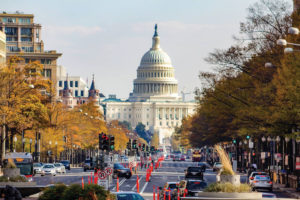Government shutdown finally ends…but for how long?

President Trump signs a bill allowing Congress to re-open the government until Feb.15.
Debates on whether or not the United States should move forward in funding the southern border wall are rampant. These debates sparked negotiations between Democrats and Republicans, and ultimately caused the 35-day partial government shutdown, the longest government shutdown in the nation’s history.
Not only was it the longest government shutdown the nation has ever seen, it was also the second shutdown under the Trump administration to generate furloughs. These furloughs included the 800,000 government employees that went without pay for over a month, not to mention over the holidays, and at what cost?
When asking a federal employee, who wished to remain anonymous, how the month-long government shutdown has impacted their work, they replied, “Morale is very low. People are upset. It’s very stressful, especially if you don’t have savings. We all hope the shutdown ends soon.”
Negotiations on both sides of the aisle continued on how to secure the nation’s southwestern border. President Trump requested billions for his campaign-promised border wall, a border wall he ensured Mexico would pay for. Democrats wouldn’t budge, failing to give the money Republicans and Trump needed to continue the project.
On Jan. 25, 2019, Trump signed a bill to reopen the Government for three weeks. This bill allows for federal employees and agencies to continue work with proper pay. The bill included none of the money anticipated for the wall, and was essentially what Democrats had asked for.
The signed agreement tasks Congress to find a way to fund the border wall by Feb. 15. If an agreement is not met by the deadline, one of two consequences will occur. One of the options is that the government will shut down yet again while congressional leaders work to settle on an agreement. The second outcome, and most likely to happen, is for Trump to declare a national emergency to bypass Congress altogether.
“We really have no choice but to build a powerful wall or steel barrier,” Trump shared. “If we don’t get a fair deal from Congress, the government will either shut down on Feb. 15, or I will use the powers afforded to me under the laws and Constitution of the United States to address this emergency.”
The National Emergencies Act was enacted on Sept. 14, 1976. This act empowers the president with special powers during a time of crisis, giving him the power to implement actions without consulting Congress. However, Congress can undo a state of emergency declared by the president with a veto-proof majority vote.
Speaker of the House Nancy Pelosi has been at the forefront of news during the shutdown, relaying Democrats’ perspective of the shutdown, in addition to the border wall. “There’s not going to be any wall money in the legislation” said Pelosi.
On the Republican side, Majority Leader of the Senate Mitch McConnell replied to Democratic colleagues, backing Trump’s border wall. “Walls and barriers are not immoral,” McConnell said.
Rhetoric from the liberal side of the aisle tends to have a refusal to back down, whereas conservatives share a sense of urgency in getting a border wall funded. At this point citizens of the United States can only wait to see what these conversations have in store come Feb 15.
